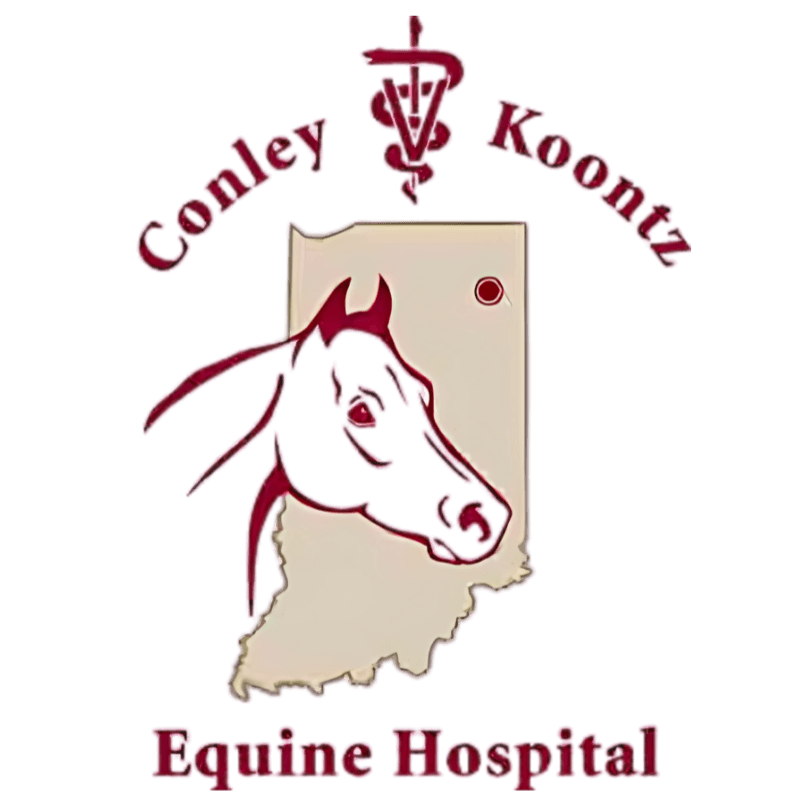Performance Horse Shoeing:
Getting The Most from Your Athletic Horse
I think we can all agree with the old statement "no foot, no horse". We also know that 80% of all lameness in the performance horse involves the foot. Why not use all the tools available to us to make sure our athletic horse is shod properly?
That's where performance horseshoeing comes into play. At Conley and Koontz Equine Hospital, we start with a lameness examination, followed by radiographs (x-rays) of the front feet. From those radiographs we take several specific measurements. Using the measurements we create a shoeing prescription that precisely instructs your farrier on how to shoe your horse for maximum performance. If your farrier is not comfortable with this type shoeing, he/she can work with our farrier who is experienced with this process. Together we can make a plan that suits your needs.
Let me be clear; performance horseshoeing is not an indictment of your farrier; it is a tool for your farrier to use to improve shoeing for the individual horse. The farrier cannot see thru the hoof wall. Using radiographs we can see inside the wall, then trim and shoe the foot based on the third phalanx bone (P3) and the alignment of the bones within the hoof capsule.
Over the years we have been able to consistently improve athletic performance and decrease incidence of lameness in all breeds and disciplines. Some conditions that can be avoided using performance horseshoeing include; bowed tendons, dropped fetlocks, fractured sesamoid bones, navicular syndrome, injured flexor tendons, injured suspensory ligament, road founder, and traumatic fractures.
Some owners tell me "I don't need performance shoeing, I have a great farrier". It is the horses with great farriers that perhaps need performance horseshoeing the most. Your experienced farrier may currently match the horse's feet cosmetically and cover up the underlying bone structure issues. The feet may look normal but will not function normally. You need radiographs to identify any bone structure issues and correct them.
YOU DO NOT KNOW WHAT IS GOING ON INSIDE YOUR HORSES FOOT UNLESS YOU LOOK!
The Performance Horseshoeing Program
It starts with a lameness exam
- The initial exam is very important to identify lameness
- If your horse is lame, more diagnostic test may be required to locate the lameness.
- Does your horse land squarely on both front feet?
- Are the size, style, and length of the shoe appropriate for your horse?
Measurements of the external hoof capsule
- Weight of the horse, circumference of hoof, length of frog, width of frog
- We can determine how much weight the horse is carrying on the front feet. This measurement is expressed in lbs/in squared.
- Using these measurements we can predict future foot related lameness and make appropriate shoeing recommendations.
We measure the length of the toe
- This is an important measurement to control break over.
Take front and side radiographs (x-rays) of both front feet
- Radiographs (x-rays) are taken digitally and can be interpreted immediately.
- Digital radiographs can be e-mailed to you, your farrier, or other veterinarians.
Measure the hoof angle
- This angle the farrier can change to compensate for bone structure issues.
Heel angle
- This angle should be within 5 degrees of the hoof angle.
- This is another angle the farrier can change to compensate for bone structure issues.
Measure sole thickness
- This measurement is important to prevent the "sore footed" horse syndrome.
- It can be very important in horses with laminitis.
Measure palmar digital angle
- If this angle is too low it puts stress on the flexor tendons, suspensory ligament, and the navicular bone
- If this angle is too high it puts stress on the fetlock, pastern and coffin joints
Measure the correct digital break over in relation to P3
- This measurement is important for proper movement and to relieve stress on all structures from the fetlock down.
Measure the distance from the coronary band to P3 (CP3)
- This distance is especially important in a horse with laminitis
Measure the horn laminar zone (HL)
- This measurement can help determine laminar swelling or rotation of P3
Measure dorsal surface of P3 to dorsal surface of the hoof (Rotation)
- This measurement is expressed as an angle
- Horses with very poor internal bone structure may have a negative angle
- The angle is increased in horses with laminitis or excessively long toes
Measure the hoof - pastern axis (HPA)
- We use this angle to help determine the correct PD angle and break over
- Increased pastern axis puts a lot of stress on the navicular bone.
We measure the coffin bone angle
- This measurement is used to compare the front feet.
Measure from the center of the hoof to the medial and lateral extents (HB)
- Helps to determine the medial to lateral balance of the hoof.
Measure from medial and lateral side of P3 to the ground surface (P3B)
- Helps determine medial to lateral balance of P3 which may be quite different from medial to lateral hoof balance of the hoof.
Using all these measurements we make an individualized shoeing plan for each horse, more specifically, for each foot. The plan is given to you and your farrier, including a jump drive with the actual radiographs. The prescription is an easy to follow guide that instructs the farrier how to trim and shoe your athletic horse.
If you are interested in maximizing your horse's performance and preventing lameness contact Conley and Koontz Equine Hospital at (877) 499-9909 or [email protected]. We can answer any questions or make an appointment.
Robert H Koontz DVM
Chief Executive Officer
Conley and Koontz Equine Hospital
(877) 499-9909
www.ckequinehospital.com
